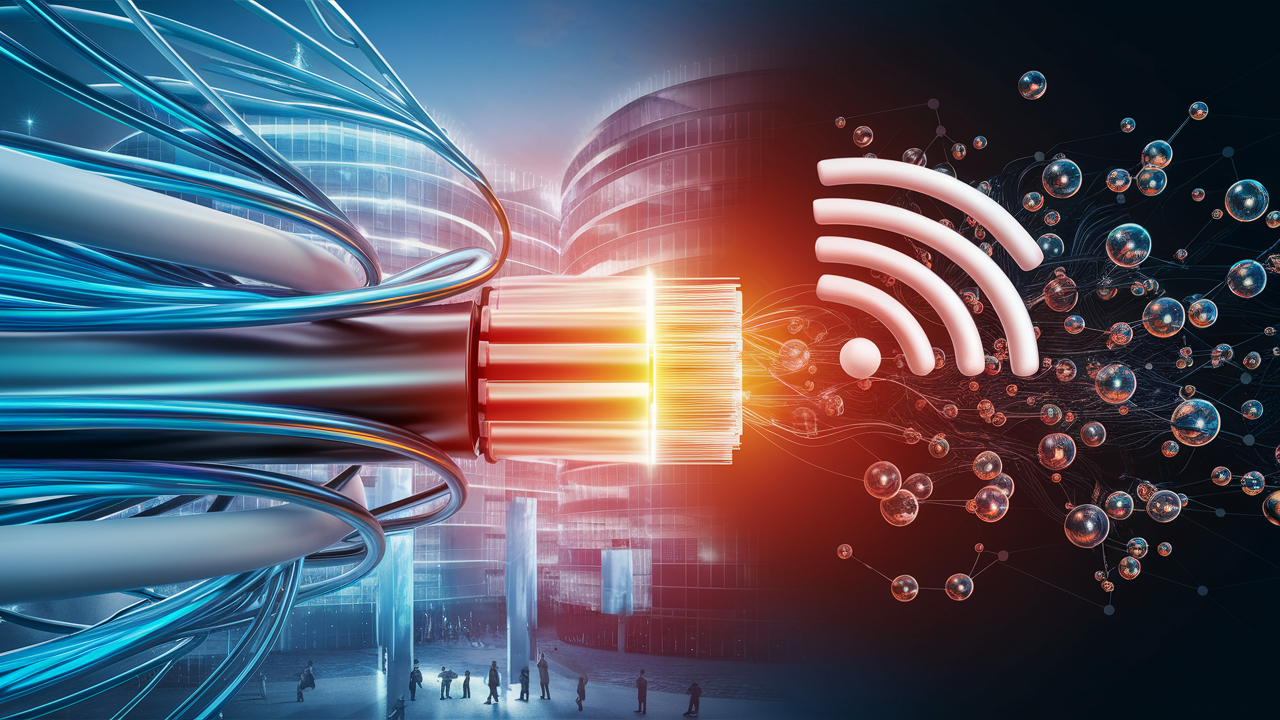Is fiber Ethernet or Wi-Fi?

Many people tend to think fiber optic internet connection is Ethernet and WiFi when in essence, they are discrete technologies. This article will explain precisely what fiber internet service is as well as the difference between it and Ethernet and Wi-Fi.
In its simplest form, Fiber Optic Internet can be described as an internet that utilizes fiber optic technology.
Fiber optic internet is also known as fiber broadband, where the internet service is transmitted electronically via fiber optic cable, which are thin strands of very high-purity glass, and transmit data through light signals. It is a technology that lets data travel through cables made of glass fibers for long distances with high data speeds and minimal loss of data and interference.
Fiber optic internet on the other hand is based on a technology that transmits pulses of light through thin strands of glass. Internet bits are transported on the light and decoded at the receiving end of the transmission. Through the glass fibers, the light signals can be transmitted for extended distances without undergoing much attenuation.
Fiber internet has very high potential speeds of up to 1Gbps or more depending on the given service provider. Fiber’s intrinsic speed capability is virtually boundless from a conceptional perspective. Fibre even the faster AT&T Internet speeds will be available to consumers as the technology of the internet advances.
What is Ethernet?
Ethernet pertains to a set of wired computer network standards used in the development of LAN in homes and offices. Inside a building or compound, computers, modems, switches, routers, and other devices are wired through Ethernet cables to receive, transmit, and access the internet.
The most common Ethernet standards used today for home networking are
- For twisted pair copper wire-based cable, the categories include the Cat 5e and Cat 6 Ethernet over copper.
- Gigabit Ethernet over existing-cat 5e, cat 6, or cat 6a cables
- Cisco Multi-Gig Ethernet for Networks of the Future using Cat 5e, Cat 6, or Cat 6a Cables
Ethernet connects the many devices in the same unique network using a hub or switch. This kind of connection uses a cable hooked into the Ethernet port on the devices or into the network hubs/switches to allow the devices to be connected. Over fiber optic or copper lines, the fastest Ethernet standard can now transfer data at up to 400 Gbps.
What is Wi-Fi?
Another brand of wireless networking technology derived from the Wi-Fi Alliance is Wi-Fi. Wi-Fi uses radio waves for communication and allows devices such as computers, cellphones, and tablets to access the internet without physical wires across approximately 20m inside and 200m in the open air.
Wi-Fi-enabled devices link to a Wi-Fi router or wireless access point linked to the internet using either built-in wireless cards or wireless network cards. To access the network and the internet, the router sends wireless signals to a designated Wi-Fi network other Wi-Fi-enabled devices can recognize and connect to.
Among the first-generation Wi-Fi networks, some offered only 1-50 Mbps for data transfer. With 1 Gbps of maximum potential throughput speed, the current Wi-Fi 6 standard provides that the router, the number of devices connected, the connection speed of those devices, and the signal-to-interference ratio define the typically smaller data rates attained in practical Wi-Fi.
Key Differences Between Fiber, Ethernet, and Wi-Fi
- Physical connection type: Fiber optic cables employ light signals in the form of an optical beam through glass fibers. Ethernet incorporates twisted pair copper wiring or fiber optic cabling. Wi-Fi uses open-air radio waves or radio frequencies to make connections.
- Speed capacity: Note that fiber has some of the highest maximum speeds, close to 1 Gbps and above. Ethernet up to 400 Mbps. Wi-Fi comes in varying bandwidths of 1-1000+ Mbps, depending on the generations of Wi-Fi.
- Usage: It is used to offer access to a dedicated high-speed internet connection in a home or a building. Ethernet is used in forming local wired networks for the interconnection of devices within structures. Local wireless networking is delivered by Wi-Fi.
- Reliability: Fiber and Ethernet provide greater reliability because data cables are less affected by interference and provide dedicated end-to-end connections. There are issues with interference, which cause the speed to reduce or maybe no connection at all through Wi-Fi.
- Latency: Fiber offers incredibly low latency for usage in applications that have strict response times. The services offered by Ethernet include low consistent latency, which is useful for applications such as gaming. Latency is slightly higher and not as stable as Wi-Fi for most users.
Therefore, the fiber optic cabling transports the internet connection to homes and businesses with very high bandwidth. The internet is then favored for connecting devices on the internet, while Ethernet and Wi-Fi are used for connection of devices within a local network, once the internet connection is within a compound. Ethernet offers faster and slower wired device connections through cables within the construction of buildings, and Wi-Fi offers mobility to devices indoors.
Upgrade to faster, more reliable AT&T Fiber Internet today! Call us at +1 844-905-5002 and get connected with speeds that keep you ahead.





